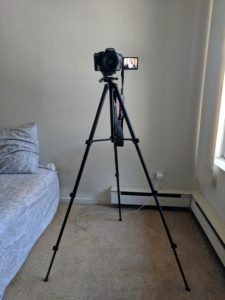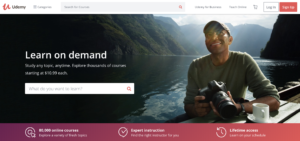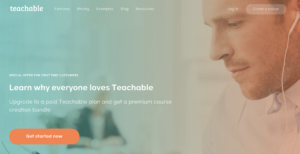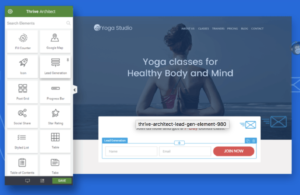I'm Trying to Create My Own Course But It's Challenging!

I'm currently working on creating an online course, but I didn't realize how difficult this was going to be!
So to back up, Julie from Millennial Boss contacted me to do an interview for their podcast. To be honest, I put it off because of shyness. Even though I had interviewed one or two people on camera for my blog, I have always feared that type of on the spot interviewing. But upon a follow-up request I decided to step up to the challenge and treat this as a learning experience.
After agreeing to an interview, I realized it would be a great time for me to build a course and talk about it during the podcast session. I've always wanted to execute, but I hadn't taken action. It would be a waste not to create educational materials for people around all the knowledge I've built up in the 2 years pursuing passive income channels. So if I want to make this course in time for the interview, I have a little less than 2 months to build this thing out. I don't know if it's doable, but I'm going to force myself to make it work!
The Challenges I'm Facing with Creating a Course
1. The Tools I'm Using
So in the first few weeks of deciding I wanted to take action on the course, I had to think about how I wanted to release the material. Do I want to release on a site like Udemy, an online marketplace of classes from people all around the world, or on a site like Teachable, that allows you to make your own branded course with its own landing page? There are different benefits to both, as from the first method (with Udemy) you can get free marketing to your course.
On the other hand, they do a bunch of discounts, and for what I'm making I wouldn't want to undercharge especially because it took me two years to learn everything I'd teach and would take another 2 months for me to build out. It would be a course I would have loved to have if I were just starting out. Teachable on the other hand doesn't have that marketplace aspect and would require me to self promote, but it allows you to create your own branded course under your own domain.
I think you can put a course on both platforms but I don't know if I would be able to price match on both sites and I'm not sure if it's worth it to do so. I see a lot of people choosing one or the other.
After weeks of pondering, I decided I would figure that out later and start working on building the course regardless, rather than sit there with action paralysis. Most likely, I will want to create a Teachable page for my course as I envision my class to be super comprehensive. I have a feeling I'm going to provide hours of extremely detailed content and basically offer everything I know, and it seems like Udemy discounts courses a little too much. I think it kind of depends on what courses you're making to see which platform works best for your product.
I also purchased Thrive Architect, and I'm basically going to use it as a means of building landing pages. I'm not totally sure if I need it if I go with Teachable. Regardless, it's a useful tool to have and really easy to use. I'm happy with my purchase and highly recommend it as it's a great way to easily build landing pages to direct paid ads to (and there's no monthly fee if you purchase the flat fee of the product).
2. The Filming Process
So I recently learned that people use Quiktime to record their screens for the screensharing portion of their video courses. I've also realized that most people film their intros with a DSLR. It looks higher quality than just filming via your laptop.
So the other day, I set up my camera and wanted to see if I could wing it, at least with the introduction of my course. You can see my setup here:

I'm using a Canon T3i and a Sigma 30 mm lens (and a tripod).
To my dismay, I spent hours and hours trying to focus the camera, get the lighting and placements right, and record myself over and over only to find it was A LOT harder than I thought. I seriously have no idea how people do it. People seem to make instructional YouTube videos out their asses! They make it look so easy, and they pump out so much content on a regular basis. I'm pretty awkward as a person - speaking never came naturally to me. I'm just not eloquent so my brain constantly blanks and I trip over my words. Because of this, course making will come a lot more difficult for me.
I've decided I needed to outline the hell out of the course and script a lot of the material. I hope that it will be less nerve racking if I do so, and I hope the screensharing parts will be a bit easier. Hopefully I won't need to script the ENTIRE course cause that will take forever, and I hope that I'll be able to video edit a lot of my screw ups, haha.
3. The Audio Equipment
I have a portable Samson mic that I initially thought would be sufficient for my course recordings. However I decided to bring up one of my cheaper condenser mics to my apartment so that I could have better quality audio. If you want to copy my set up for mics, I use an MXLV69M, an Alesis io2 interface, cables, mic stand, and pop filter. If you want something simple, you could just get a USB mic. Usually Audio-Technica mics are decent for this.
But then I realized if I use such a mic, I would need to pair up the audio from my video recordings from my DSLR to my condenser mic recordings from my laptop. If I have to do tons of takes cause of mess-ups, it may get annoying trying to match the right audio to the right video.
4. The Outline
I have barely started outlining my course and it's already tripping me out. If you follow me you'll know that I've attempted tons of different passive income channels. Most people usually focus on just one income stream and teach that. But I ended up diversifying and trying out many different channels. Does this mean I should teach EVERYTHING I know? How would I package it all up? And how would I divide up each section? Things got even more complicated as I dove deeper into it all.
My conclusion for now is: do EVERYTHING, and then figure it out later.
5. The Lighting
Because I plan to use natural lighting to record my intros, I can't record on weekdays as I'm working full-time and can't work on it in the afternoon. That means I need to set aside weekends, when the sun is out, to knock out everything. I basically have to aim to record the intros the 3rd weekend of July as I have plans already set for other weekends.
Conclusion
Unfortunately this is a lot more work than I thought especially for an awkward person like me. But I am going to keep a positive attitude and try my best. Even though I do YouTube for music, course making is still a bit out of my comfort zone as I hate talking in front of a camera. Singing I can do...but talking is another beast. I also don't really like my speaking voice, which makes it even harder!
Anyway, wish me good luck. I will keep you guys posted on the progress. If you have any advice please let me know in the comments!
Also, here are the resources I mentioned earlier. I use affiliate links in them so if you want to support me (at no cost to you), you can use my links below:
Course Tools:
Thrive Architect
Udemy
Teachable
Camera Setup:
Canon T3i
Sigma 30 mm lens
Tripod
Mic Setup:
MXLV69M
Alesis io2 interface
Cables
Mic stand
Pop filter
Audio-Technica mics
Digitalnomadquest is a participant in the Amazon Services LLC Associates Program, an affiliate advertising program designed to provide a means for us to earn fees by linking to Amazon.com and affiliated sites.



I appreciate your detailing the creative process of your endeavor. For focusing the camera, if you can afford generous light I'll say choose an aperture stop that'll give you a narrower opening for light (say upwards of f/5.6 upto maybe 8). That'll give you a deeper depth of field. That's just jargon to say more area of the image will be in focus. Then you can place something about where your head will be, go behind the camera, focus on that thing using manual focus. You'll be good afterwards. A little trick could be to use auto-focus to focus on that thing you placed, and once the focus is locked, while will depressing the shutter button halfway, with the other hand switch to manual focus. When you're rich and famous from selling your course you can buy a camera with follow focus 😉
The downside of using a narrow aperture is that you're telling the camera lens to let in less of whatever available light. So you need an abundant supply of illumination to compensate for that austerity instruction. So if you can do it outside or on a balcony, it'll be perfect. That's why I started out with the conditional “if you can afford generous light."
Good luck, and I hope the few tips help.
P.S. An easy way to adjust aperture and not mess everything else up is to use the Aperture Priority mode of your camera. I think your model labels it as AV. It's on the dial on top where you have AUTO, M, TV and what not.
Haha damn I don't even know what a lot of this means. But this is good to know. Thank you!
Hi dnomadquest,
Visit curiesteem.com or join the Curie Discord community to learn more.
Thanks!
Congratulations @dnomadquest! You have completed the following achievement on Steemit and have been rewarded with new badge(s) :
Click on the badge to view your Board of Honor.
If you no longer want to receive notifications, reply to this comment with the word
STOPTo support your work, I also upvoted your post!
Do not miss the last post from @steemitboard:
SteemitBoard World Cup Contest - The results, the winners and the prizes
Let's drop by here
https://steem-byteball.org/#VKNL5NQQKPDKUFZHTJDP7V2YIESR2S2S